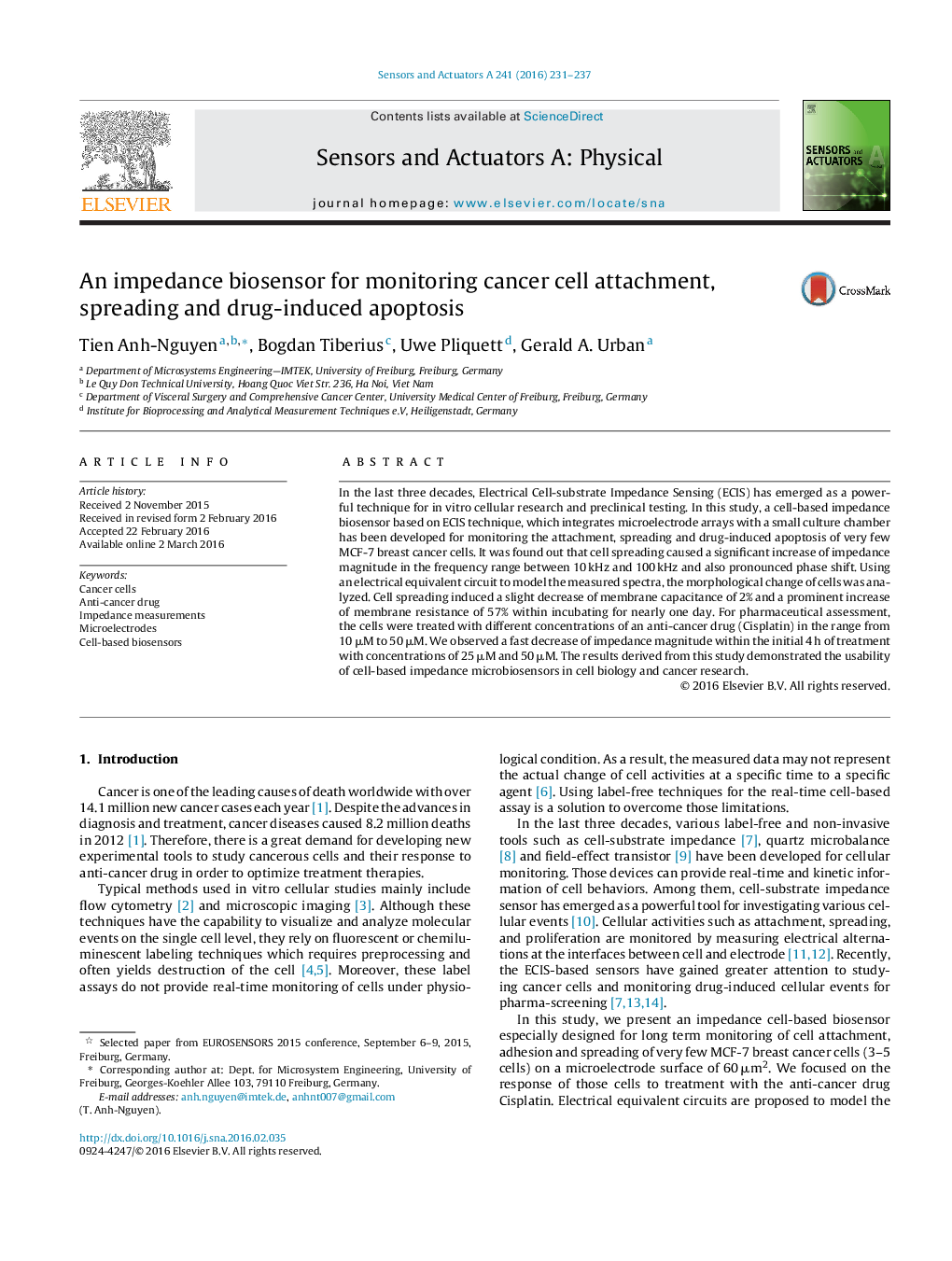| Article ID | Journal | Published Year | Pages | File Type |
|---|---|---|---|---|
| 736606 | Sensors and Actuators A: Physical | 2016 | 7 Pages |
•In this work, an impedance biosensor which combines microelectrode array with a small cylindrical well was successfully developed and used for.•Monitoring behaviors of very few cancer cells (3–5 cells) on the microelectrode surfaces.•The response of cells on anti-cancer drug treatment was carried out.•The measured impedance spectra were analysed and interpret by using an electrical equivalent circuit.
In the last three decades, Electrical Cell-substrate Impedance Sensing (ECIS) has emerged as a powerful technique for in vitro cellular research and preclinical testing. In this study, a cell-based impedance biosensor based on ECIS technique, which integrates microelectrode arrays with a small culture chamber has been developed for monitoring the attachment, spreading and drug-induced apoptosis of very few MCF-7 breast cancer cells. It was found out that cell spreading caused a significant increase of impedance magnitude in the frequency range between 10 kHz and 100 kHz and also pronounced phase shift. Using an electrical equivalent circuit to model the measured spectra, the morphological change of cells was analyzed. Cell spreading induced a slight decrease of membrane capacitance of 2% and a prominent increase of membrane resistance of 57% within incubating for nearly one day. For pharmaceutical assessment, the cells were treated with different concentrations of an anti-cancer drug (Cisplatin) in the range from 10 μM to 50 μM. We observed a fast decrease of impedance magnitude within the initial 4 h of treatment with concentrations of 25 μM and 50 μM. The results derived from this study demonstrated the usability of cell-based impedance microbiosensors in cell biology and cancer research.
